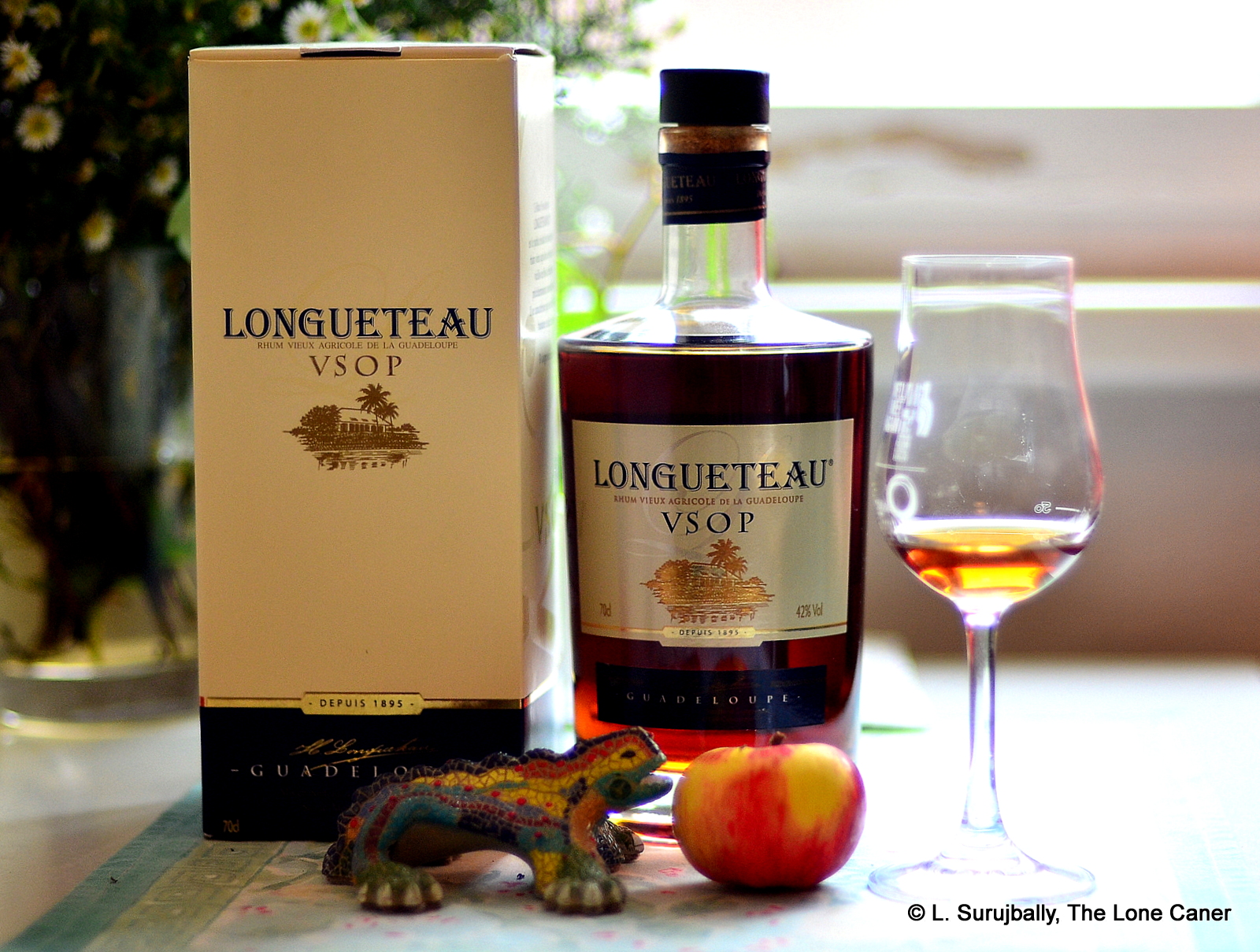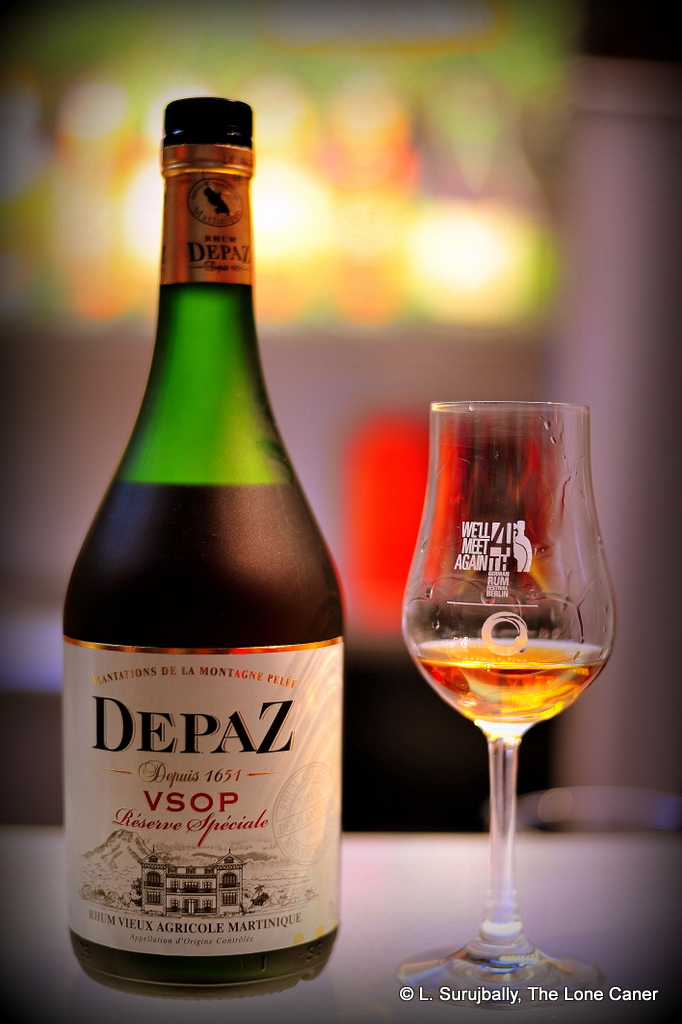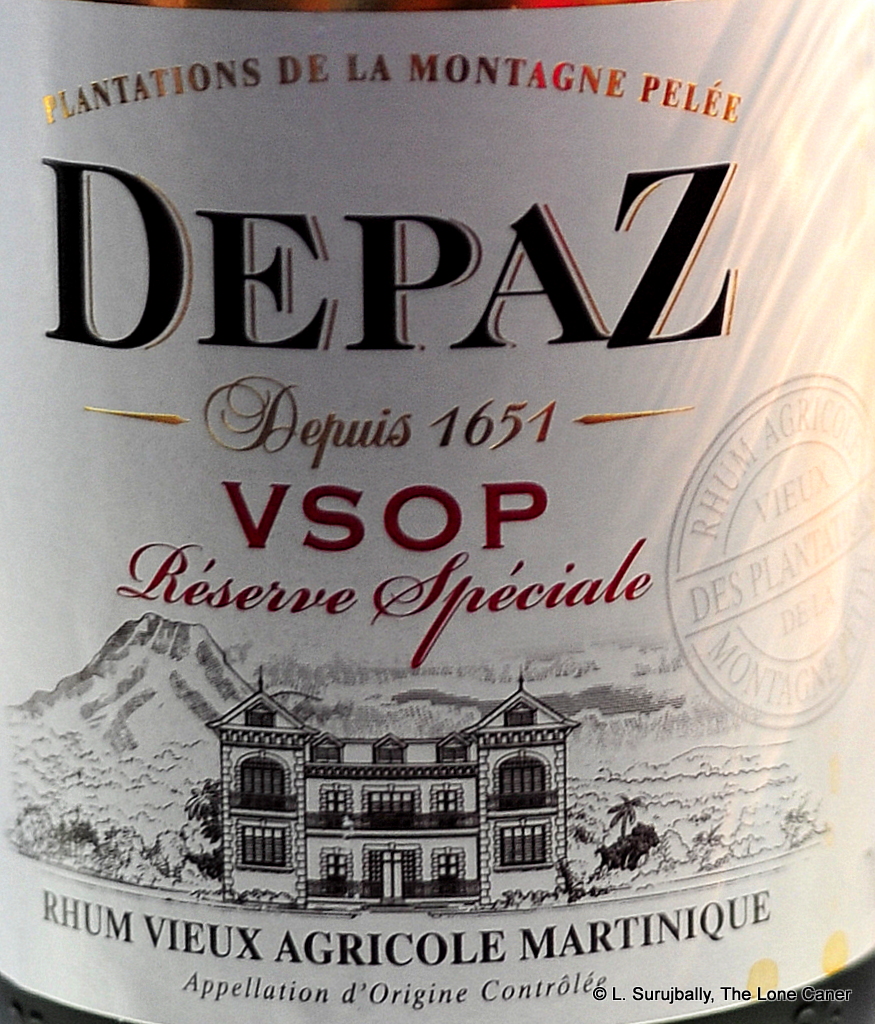#379
Much as I had with the Longueteau Grand Réserve, a ten year old agricole from Basse-Terre (Guadeloupe), I felt the 42% strength on the six year old VSOP was perhaps too timid and too wispy for a rhum which could have been more had it been made stronger. Longueteau, a distillery which has been in operation since 1895 and produces the Karukera and Longueteau lines of rhums, seems to eschew fierce and powerful expressions and is quite content to keep on issuing standard strength work, but since their quality is nothing to sneeze at and is readily approachable by the larger body of rum aficionados, perhaps they have hit on a preferred strength and just stick with it.
In any case, the orange amber coloured rhum presented very nicely indeed on the nose, beginning with a light sort of fruit basket left in the sun too long but just missing being overripe. There was vanilla ice cream and the vague saltiness of rye bread and that spread known as kraüter-quark in Germany, with dill and parsley adding some interesting herbal notes. Like most agricoles it was delicate and crisp at the same time, and while there was certainly some sugar cane sap and grassiness it, this stayed very much in the background. After opening up over several minutes more, one could discern olives in nutmeg, brine, watermelon and peaches, light and clear, firm and delicate all at once.
The nose was certainly very pleasant – however much one had to work at it – but on the palate the 42% became somewhat more problematic since it really was too light and easy….though one could say “playful” as well, and still be on the mark. Oddly, a drop of water (and another ten minutes of opening up) solved that problem nicely, allowing clear, if faint, acetone and fried banana flavours to emerge. These merged well with some smoke and oaken tannins, more vanilla and a smorgasbord of fruits to come forward – papaya, watermelon, sugar water, pears and white guavas – to which, over time, were added herbs, and some pickled gherkins, leading up to a short, dry finish mostly redolent of soya, brine, dark bread and (again) vanilla and a grape or two.
Overall the rhum was a very good one, if perhaps just too gentle. Many will enjoy it for precisely those attributes, since it doesn’t assault the senses but prefers to stroke them with a silken wire of flavour, and draws back from any kind of serious challenge or analysis. A cocktail geek can probably make an interesting concoction with it, but for my money this is a tasty, twittering little rumlet, which, with a few extra proof points, might be even better, and in its current iteration, can be had by itself without any additional embellishment. It’s both complex enough within its limitations, and unassertive enough for the peaceniks, to give perfect satisfaction on that level, and in any case, yes, I did like it: whatever my reservations, I also consider it a soundly enjoyable sundowner that adds to the sum total of the delicious variations which agricoles provide.
(84/100)
Other notes
- Some distillery notes are provided in the review of the Grand Réserve.
- The company website says aged in oak casks that once held brandy; other sources say ex-cognac barrels.


